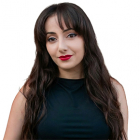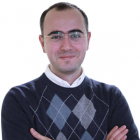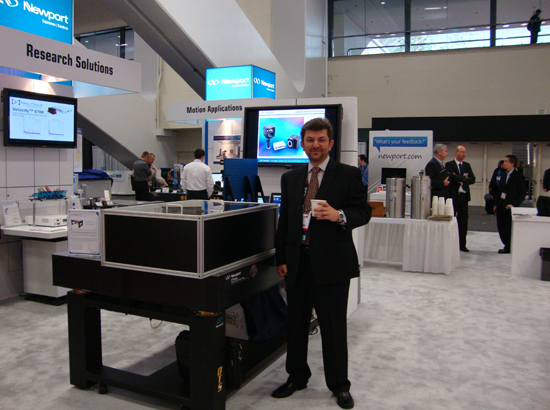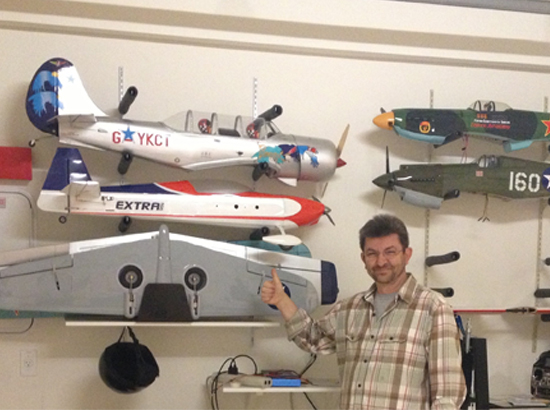Mediamax continues its “50 Global Armenians” special project and presents its next hero, Ruben Zadoyan, Senior Director of Technology and Applications Center at Newport Corporation, Irvine, USA.
Ruben Zadoyan is a scientist with more than 25 years work experience in the research and development (R&D) field. Ruben was born in Yerevan. After graduating from school after Kamo, he entered the Department of Physics at Yerevan State University. Then he earned his Ph.D. in Physics from Moscow State University, Russia, and returned to Armenia. Over 1985-1991, Ruben worked at the Institute of Laser Technologies (Lazerain Tekhnika). In 1991, a few months before the collapse of the USSR, he moved to USA with his family and started working at the University of California, Irvine. He has been holding the position of Senior Director of Technology and Applications Center at Newport Corporation since 2006. Ruben Zadoyan is an author of over 60 scientific publications and 20 patents.
I graduated from Kamo school in Yerevan in 1973 and entered the Department of Physics at Yerevan State University to specialize in the field of quantum electronics. It was time when the young generations were inspired by great achievements in science and technology. Americans landed on the Moon and Soviets were driving the “Lunokhod” on the surface of the Moon. Recently invented lasers were just entering our lives. It was exciting to be part of all these great technological achievements. Becoming a scientist seemed to be a natural choice at the time. At University I was inspired by great teachers and scientists. One of them, the Chairman of the Department of Quantum Electronics, Professor Vilik Markarovich Harutunyan, became my mentor for many years to come. After graduation, I worked at the Institute of Laser Technologies (Lazerain Tekhnika) of Yerevan State University for about two years. Then I left for Moscow to get my Ph.D. from Moscow State University. There I had the privilege to work and interact with prominent scientists and teachers like Prof. S. A. Akhmanov, Prof. N. I. Koroteev, A. I. Kovrigin and N. I. Zheludev.
After returning to Armenia in 1986, I resumed working at the Institute of Laser Technologies as a team leader. We were developing high power lasers for the military and, as a byproduct, laser systems for industrial applications. I worked there until May of 1991, when funding for our projects started to dry up. The situation was rapidly becoming desperate. It was clear that funding for science and technology was not coming back as the Soviet Union was slowly plunging into chaos.
Several months before the collapse of the Soviet Union, Ruben made a decision to move to the U.S. with his family.
A few months later, I started working as a research professor at the Chemistry Department of the University of California, Irvine. There I was fortunate to work with Prof. Ara Apkarian who later became my very good friend. 
Ruben Zadoyan and his radio controlled airplanes.
Photo: R. Zadoyan's archive.
I haven’t had formal education in English. However, the translations from English that I used to do for the Chamber of Commerce of Armenia back in my college years proved to be helpful. So, upon arriving to the US, I had no communication problems, although my first few months at UCI were a shock. I had never been to a U.S. University before. Nice buildings with clean rooms, full of new furniture. The labs had so much state -of -the art equipment that I couldn’t believe my eyes. It was so exciting to work with all these “toys.” I was spending long hours doing my research and sometimes having heated discussions with Ara. It was fun. We published several seminal papers in the field of femtochemistry, which was a new emerging direction in physical chemistry. Those papers are being cited to this day.
In 2000, along with my work at the university, I started working at Intralase Corporation. We were developing femtosecond laser based medical devices enabling laser eye surgery known as “LASIK” procedure. At that time, Intralase was a small startup company with only few employees. We worked tirelessly to make the device reliable, and to prove that the procedure was safe. In 2006, that small company grew to 400 employees worldwide. By that time, about 3 million eye surgeries were performed. To put that number into perspective, imagine that the entire population of Armenia had corrected vision and no one wore glasses. Being a scientist at Intralase, I learned to be innovative and entrepreneurial. It was a great experience. 
Radio controlled airplanes are Ruben's main hobby.
Photo: R. Zadoyan's archive.
In late 2006, I joined Newport Corporation, a global company with approximately 3,000 employees and presence in 50 countries. Newport develops and sells instrumentation for the scientific market. Many experimental and research works by well-known scientists in the world are conducted with Newport equipment. When I was a graduate student in Moscow with scarce funds in foreign currency, we would occasionally buy equipment from Newport and were amazed with quality and performance of the instruments. Little did I know that some 20 years later, I would be working in that same company and would be developing the same cutting edge technologies and scientific instruments. It was like a dream come true.
The center that I am leading consists of a team of 20 scientists and engineers developing laser based applications and devices for various fields. Currently, we are focused in two main areas. The first area is based on developing 3D laser scanning microscopy techniques. This method allows chemically selective imaging, meaning that only the desired molecules in the sample can be visualized. For example, one can acquire images of only fat cells in the tissues. It turns out that the morphology of fat cells in human skin is correlated with the effect of chemotherapy on the human body during cancer treatment. Therefore, the imaging method that we are working on can be used for quantifying the side effects of chemotherapy.
The second important area is laser micromachining. We are developing devices that can be used for fabrication of three-dimensional structures with sub-micron features. These devices can play an important role in the field of nanotechnology.
My wife Liliya and I have two children, Hayk and Lia. They have chosen their own path, and I have never put pressure on them. Hayk is a psychologist. Lia specializes in computer engineering. One day, she may work at Apple or Google. They both speak fluent Armenian and consistently visit Armenia with great pleasure. 
Ruben with wife and children.
Photo: R. Zadoyan's archive.
Ruben keeps in close touch with the scientific circles of Armenia, often conducts lectures at the university and is also involved in the Scientific Board of CANDLE project.
I have always kept in touch with Yerevan State University where many of my University friends work. We have carried out various joint projects, particularly with Professor Levon Muradyan from the Chair of Optics of Department of Physics. At the same time, I have always done my best to assist Armenian scientists in getting research grants from abroad. I believe that throughout these years I helped to secure roughly $500,000 of funding.
Currently, science in Armenia is suffering due to lack of funding. Science is expensive, but it is an investment in the future of the country. I realize that in the current geopolitical situation, it is more important to have a strong army, but the future of Armenia depends on scientific progress today. In this context, it is very important to properly distribute the available funds. The process of awarding grants from the budget has to be competitive, transparent and fair. I believe that The State Committee of Science has developed such a process. It may not be perfect and may need improvements, but it is a step in the right direction. I know that there is a lot of controversy on this subject, but I believe that an open dialogue between the interested parties is the way to move forward.
I visit Armenia almost every year. During my short stays in Yerevan, I enjoy seeing my friends and walking in the streets. I am often invited to give lectures or presentations at conferences. This fall, I will visit Yerevan again to give a lecture at the Conference of Young Scientists at University. This type of interaction between students and scientists from abroad is very important for the upbringing of the new generation of scientists in Armenia. I must say that I enjoy interactions with students. They are becoming more and more competitive. With every visit, I see more students master English. Many of the students studying physics can easily apply to graduate schools at the best universities in the U.S. Of course, as you enter the university, you see that the conditions are far from perfect and there is no proper equipment. However, there are some success stories as well. Prof. Muradyan, for example, has a state of the art research lab. Because of his dedication and tireless effort, he was able to receive several grants from NATO, EU and acquire the best equipment. Several talented young scientists have already graduated from his group. That is the model that other faculty must follow.
Recently, I joined the Scientific Advisory Board of CANDLE (Center for the Advancement of Natural Discoveries Using Light Emission) project. It is a very ambitious project aimed at establishing an international center based on the synchrotron radiation accelerator in Armenia. The center is headed by Vasili Tsakanov. As you might know, the first phase of the project has already started. It is focused on the development of the AREAL linear accelerator. I believe Armenia will greatly benefit from this project. Such large investment into the equipment and infrastructure will have a long-lasting positive effect on science in Armenia. It will create jobs, attract scientists from outside, fuel collaborations and become an excellent basis for training of the new generations of scientists, something that the Institute of Physics has done in past.
Aram Araratyan.




















Comments
Dear visitors, You can place your opinion on the material using your Facebook account. Please, be polite and follow our simple rules: you are not allowed to make off - topic comments, place advertisements, use abusive and filthy language. The editorial staff reserves the right to moderate and delete comments in case of breach of the rules.